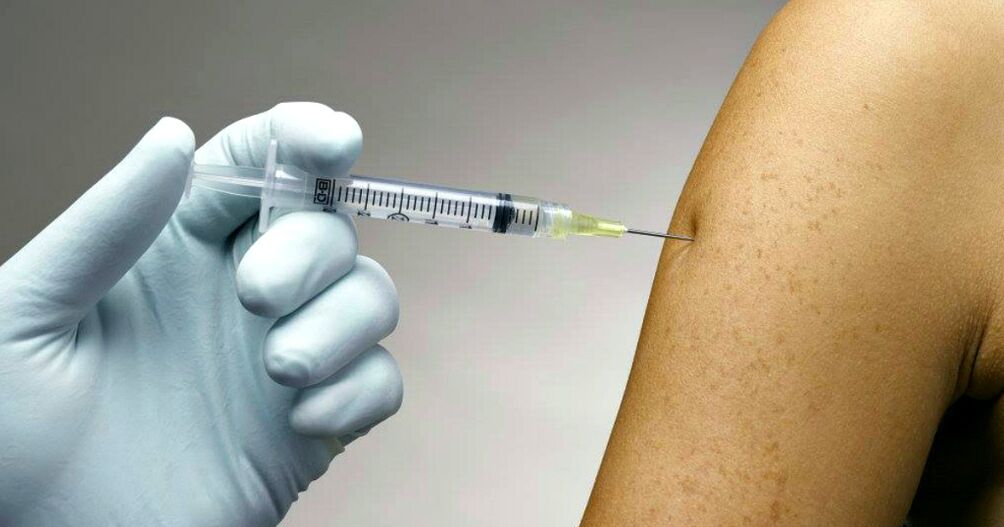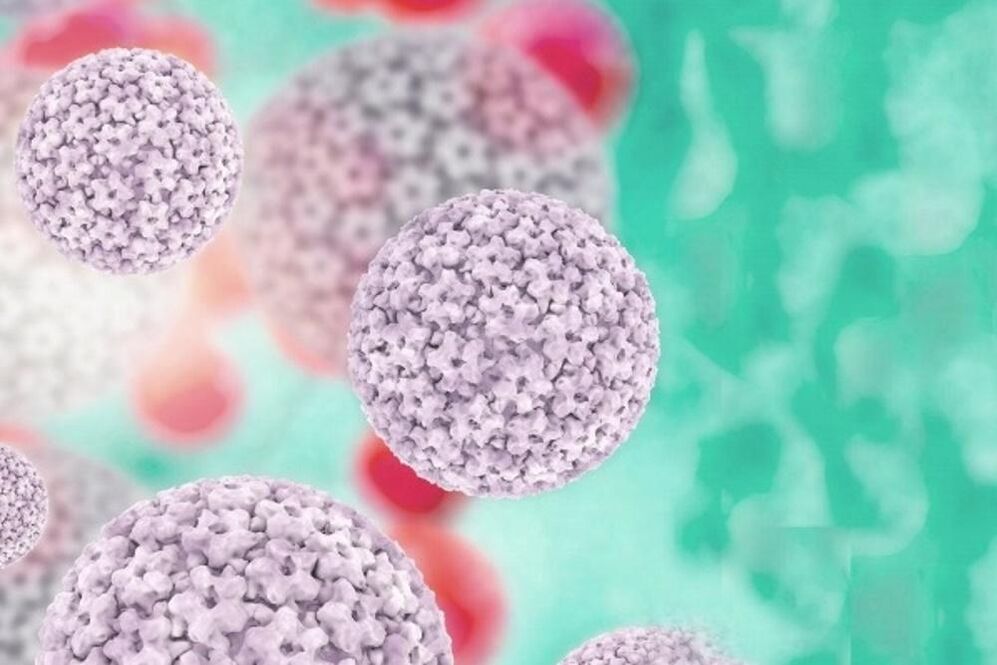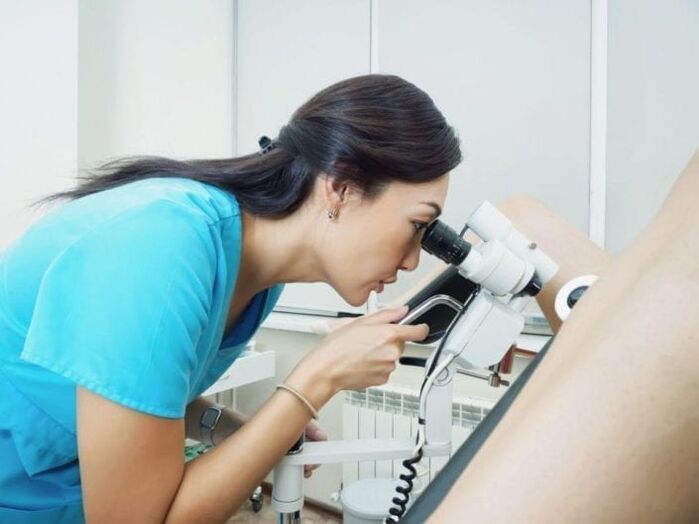
Human papillomavirus (HPV) affects epithelial cells and has a granule diameter of 55 nm. One feature is the proliferation of the skin epithelium, as well as the mucous membranes. In the early stages, the pathogen usually affects the basal cells of the epithelium, entering them through microtrauma. Localized papillomas usually appear on the skin of the neck, armpits, groin and genitals (most commonly), the lining of the mouth, and the nasopharynx.
This virus can be asymptomatic for many years. To detect HPV, people use electron microscopy or molecular hybrid methods.
Types of human papilloma virus
In humans, HPV is differentiated, it affects mucous membranes and skin. Among the large number of papillomaviruses, there are species with low and high cancer risk. It has been shown that the carcinogenic properties are related to the ability to integrate DNA into the genome of human cells.
Viruses are activated in 10-20% of cases. Depending on its type, this can lead to benign or malignant lesions. Some HPVs do not cause cancer. They lead to the appearance of warts and genital warts. The most common are HPV 6 and 11.
HPV oncogenes are cancers with a high risk of developing cancerous lesions, especially on the cervix or anus. In terms of skin, HPV 16 and 18 are more common, as well as HPV 5 and 8, which can lead to skin cancer. The best known form of cancer caused by HPV is cervical cancer. But men can also get the papillomavirus, which in the worst cases can cause cancer of the penis or anus.
Often women are faced with HPV 16 - this is an observed form of the parasite inside the body, that is, outside the cell chromosomes (benign). HPV 18 is characterized by a high risk of developing cancer - at first, benign tumors are formed, which after a while degenerate into cancer. Virions in this case are very small (up to 30 nm).
Different types of HPV infections lead to:
- cervical tumor;
- invasive or pre-invasive cancer;
- Genital warts on the urinary tract and genitals.
The introduction of pathogens into the body does not always lead to illness. It all depends on the causative factors: increased sexual activity, vitamin deficiency, pregnancy, hypothermia, endometriosis, smoking, alcohol abuse, etc. It should be borne in mind that viral infections can occur. even in a body with a good immune system.
Features of the infection

The human papillomavirus is very contagious. It is usually transmitted by direct contact, skin-to-skin or mucous membrane-to-mucous membranes, with an infected person. In genital infections, this most commonly occurs during vaginal or oral sex. A large number of sexual partners or other STIs (sexually transmitted infections) increase the risk. Indirect transmission is also possible through contaminated objects, clothing or bedding, but it is rare.
In 7% of cases, mother-to-child transmission of the virus can occur during delivery when the disease is active. The risk increases to 40% if you have HPV 16 or 18.

Penetrating the epithelium, violating its integrity, papillomavirus infection promotes the growth of the epithelial cell layer in the form of warts or warts. This is a contagious disease that spreads quickly to others. As a rule, warts and cysts do not cause metastases and usually disappear spontaneously.
Symptoms of HPV
The incubation period is up to 9 months (median 3 months). HPV can stay in the body without any obvious symptoms. The virus can go undetected for months or years. Even at this stage, it can be contagious.
Warts on the skin often appear in clusters and increase when scratching. The two most common papillomas are gray, hard, raised with a broken surface (common wart) or flat and reddish (flat warts). Warts have spines that grow on the soles of the feet or heels, grow inward, and are therefore often painful.
The causative agents of genital warts occur on warm and moist parts of the body, so they are localized in folds and on mucous membranes. They can cause symptoms such as itching or burning. The incubation period, that is, the time from infection to the onset of symptoms of genital warts is from 3 weeks to 8 months.
There are several forms of genital warts caused by different pathogens:
- Genital warts. The pale or reddish nodules are usually clustered and appear on the labia, vagina, penis, urethra, anal canal, and rectum. They are very contagious.
- Flat warts. They appear as flattened nodes and are found mainly on female genitalia. They increase the risk of developing cancer.
- Giant warts (Buschke-Levenshtein tumor). They grow into extremely large formations, destroying surrounding tissues. In rare cases, they can degenerate and lead to squamous cell carcinoma.

Infections of the mucous membranes of the upper respiratory tract may also occur. The conjunctiva of the eye may be affected, resulting in the growth of pink peduncles. It is difficult to spot the asymptomatic process that the doctor can only see with the help of aids, such as acetic acid (the substance that discolors the wart) or a microscope.
In addition, the virus can also reside in the cell without any tissue changes. Then they talk about a latent infection, i. e. the presence of the pathogen but no symptoms. After infection, this phase can last from a few weeks to several months.
Possible consequences
When infected, the virus penetrates into the cells of the connective tissue of the skin and mucous membranes, settles in the nucleus of the cellular structure and multiplies there. Usually, such HPV infections go unnoticed and heal on their own without consequences, as the immune system successfully fights off the pathogen.
However, some types of HPV produce changes in the skin, i. e. growths. Possible forms include genital warts or warts and papillomas, which can affect, for example, the face, arms, or legs.
The tissue changes that cause it are mostly benign, but can also be degenerative and lead to cancer. For example, cancer can occur decades after HPV infection. Cancer of the female external genitalia (vulva and vaginal cancer), anal cancer, cancer of the penis, and cancer of the mouth and throat (tumors of the head and neck).
Diagnostic setting

A test to look for HPV infection is done in women as part of preventive visits with a gynecologist. During a pelvic exam, a swab is taken from the lining of the cervix, this is called the Papanicolaou test (cytological test). The resulting material is examined for tissue changes to determine precancerous conditions.
Alternatively, an HPV test may be done, in which cellular material from a mucosal swab or tissue sample is examined in a laboratory for certain viruses. However, this only allows to demonstrate the infection status of the affected area, but does not make any statement as to whether tissue changes have occurred. Therefore, HPV testing makes sense, especially when combined with Pap testing, and can help detect cancer precursors at an early stage.
If the test is positive, this is not yet a cause for concern, as infection does not always lead to cancer. Regular testing is recommended to detect tissue changes at an early stage. Conversely, a negative test result does not allow us to confirm whether there is a past infection that the body has successfully fought off.
For men, there is no prophylactic check-up for which testing will be performed regularly. If there is a corresponding type of cancer, screening for the tumor can determine whether HPV infection is at the root of the cancer.
Specialized DNA techniques are also used in laboratory diagnostics, such as real-time PCR. Genital warts caused by HPV types 6 and 11 are easily detected during gynecological examination.
How to cure papilloma in humans?

In most cases, the disease does not require treatment because it resolves on its own and then the virus is no longer detectable. However, if this is not the case, the infection can last longer and persist for months or years.
To date, there is no method of systemic action against this virus, so it is possible to completely destroy it. However, treating the warts results in a reduction in the number of viruses, so in many cases the immune system is able to fight off other viruses and thus eliminate them. In some cases, the pathogen persists and can cause repeated symptoms.
Treatment strategies depend on the type of HPV and the associated picture of the disease:
- Warts and genital warts can be treated with topical salicylic acid formulations.
- Cryotherapy is also a commonly used method for HPV. In this case, the wart is burned with liquid nitrogen.
- Laser or electrocautery are equally applicable methods.
Because the frequency of recurrence is quite high, it is advisable to check yourself regularly and use condoms even several months after the lesions disappear, so as not to infect your partner.
For cancers caused by the HPV virus, treatment is much more difficult. In cervical cancer, it is usually recommended to remove the uterus, the upper part of the vagina and the ovaries, respectively. This can be supplemented with radiation therapy to rule out recurrence. Other cancers caused by HPV are often treated with targeted therapy, such as radiation or chemotherapy.
It should be remembered that surgery is not a primary solution but only a cosmetic problem, because after removal, the virus can stay in the surrounding tissue and the wart can reappear.
Prevention of infection

Two vaccines are available: bivalent HPV 16 and 18 and HPV 6, 11, 16, and 18. Vaccination is recommended for all young girls 14 years of age and older.
Vaccination does not protect against all types of HPV. Therefore, all women between the ages of 25 and 65, even if they have been vaccinated, are advised to have regular smear tests.
Timely detection and complete removal of warts helps to reduce the risk of disease. The effectiveness of using condoms to prevent transmission of infections can greatly reduce the risk of developing this condition. The most promising method for the prevention and treatment of the early stages of this infectious disease is a specific polyvalent vaccine.














































































